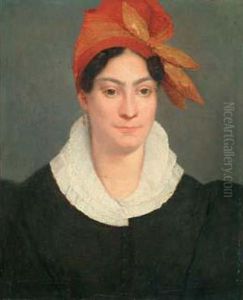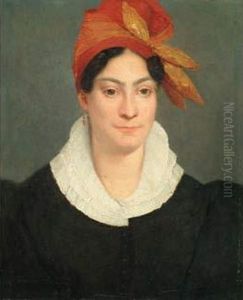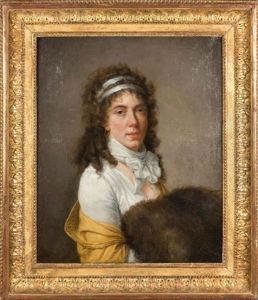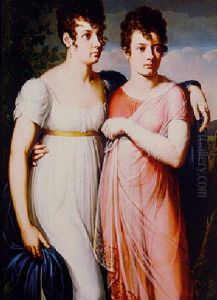Marie Guilhelmine Benoist Paintings
Marie-Guillemine Benoist was a prominent French neoclassical painter of the late 18th and early 19th centuries. Born on December 18, 1768, in Paris, she was born Marie-Guillemine de Laville-Leroux. She came from a well-to-do family and, unlike many women of her time, was able to receive a thorough education in the arts. She initially studied with Élisabeth Vigée Le Brun, the renowned portraitist of Marie Antoinette, and later, she became a student of Jacques-Louis David, the leading French painter of the neoclassical movement.
Benoist's career as an artist began in earnest after the French Revolution. Her early work reflected the influence of David, focusing on themes of classicism and the virtues of the Republic. However, she is perhaps best known for her 1800 painting 'Portrait d'une négresse' (Portrait of a Black Woman), which six years after the abolition of slavery in France's colonies, presented a dignified image of a black woman. The painting is considered an important work for its early contribution to the representation of black subjects in Western art.
Throughout her career, Benoist exhibited her work at the Paris Salon, the official art exhibition of the Académie des Beaux-Arts in Paris. Her subjects varied from portraits to historical and mythological scenes. Despite the challenges faced by women artists at the time, her talent and connections allowed her to achieve a certain level of success and recognition. After her marriage to Pierre-Vincent Benoist in 1793, her painting career slowed, as was often the case for women who entered domestic life during this period.
Marie-Guillemine Benoist continued to paint and exhibit in the Salon until 1817. Her later works were mostly portraits, which included members of her family and the French aristocracy. She died on October 8, 1826, in Paris. Despite the significance of her work, Benoist's contributions to art were largely overshadowed by her male contemporaries and it wasn't until the late 20th and early 21st centuries that her work began to be reexamined and appreciated for its artistic and historical value.







